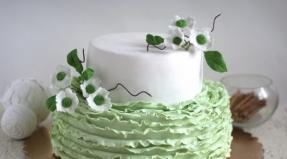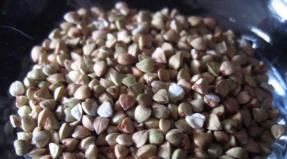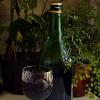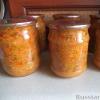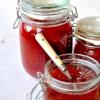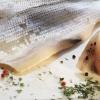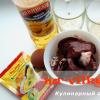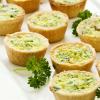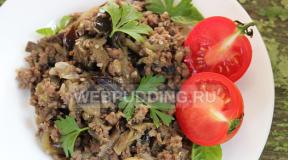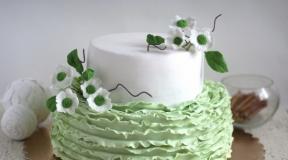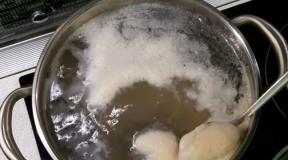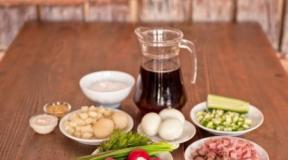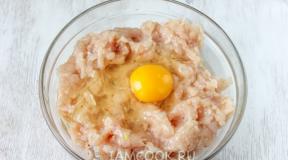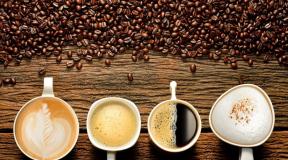How does a tincture differ from a liqueur? Difference between liqueur and tincture
Liqueurs and tinctures are alcoholic drinks of various strengths, which are alcoholic extracts from fruits or berries (liqueurs) and medicinal plants (tinctures). Liqueurs are usually served at the table, and tinctures are usually used for medicinal purposes.
Russian traditions
For a very long time there was a tradition of drinking rum straight from the bottle. It originates from sea pirates and sailors, whose drink it is considered to be. The fact is that initially, barrels and bottles of this drink, at that time the cheapest, were purchased for ships and given out only on special occasions: after another victory over the enemy, after taking a ship, etc. But how to drink from mugs? it was not very convenient during the seas; the sailors preferred to drink rum straight from the bottle. Now this tradition is considered obsolete and practically does not occur. In addition, it contradicts the norms of etiquette.
Many people attribute liqueur to one of the types of wine, but in fact these drinks differ in many ways. During the preparation of liqueurs, no fermentation occurs. Liqueurs usually contain a much higher amount of alcohol, and are therefore stronger than wine.
Since ancient times, liqueurs have been more popular in Russia than wine. This is due to the fact that the main product for making wine – grapes – does not grow in many areas of the country. The raw materials for making liqueur can be berries such as currants, cherries, raspberries, lingonberries, rowan berries, plums, as well as apples, pears, peaches and many other fruits.
Fruits for preparing the drink are divided into several groups. The first group includes stone fruits, consisting of pulp and seeds. The seed of such a fruit consists of a core and a hard shell. Such berries include cherries, plums, apricots, cherry plums and others. It should be noted that the smaller the seed of the fruit, the more juice is released from it. This information is used when preparing liqueurs.
The second group of berries consists of pome fruits, which have a thin skin, as well as seed chambers consisting of five nests. Such fruits include apples, pears, quinces and others. The third group includes fruits with a lot of pulp and small seeds, for example, strawberries, raspberries, blackberries.
Considering these features of the raw material, as well as the fact that it is the pulp containing juice that is used to prepare liqueurs, it should be noted that berries of the third group are most suitable for liqueurs. The peel is also valuable, since it contains coloring, tanning and aromatic substances. Dying substances give the liqueur a specific color - from light pink to dark purple, tannins - a characteristic astringent taste. Aromatic substances, which are represented by essential oils, determine the strength and durability of the aroma of the liqueur. These indicators depend on the amount of essential oils contained in the fruits.
To prepare tinctures, medicinal plants are used as raw materials, such as valerian, calendula, motherwort, lemongrass and many others. The raw materials for this drink can be leaves, flowers, and roots of the listed plants, depending on the content of medicinal substances in them. The herbs themselves are often used to make tinctures, but it should be remembered that they are recommended to be collected directly at the time of flowering or ripening.
As a remedy, tinctures are taken in smaller quantities than liqueurs, and their strength is higher. Very strong tinctures can be used as aromatic essences. Tinctures can be used in combination with plenty of water.
Due to the fact that tinctures are in some way related to medicinal drinks, they can be divided into several groups depending on their functional focus. There are laxatives, tonics, sedatives and other types of tinctures. For each of them, the composition of the raw material is determined, which determines their medicinal value. For example, for a soothing tincture you can use valerian, Chinese schisandra, while for preparing a tonic tincture, aralia and eleuthrococus are best suited, and the laxative includes senna angustifolia, plantain, buckthorn, and aloe.
Some tinctures have a characteristic bitter taste, so they are not very pleasant to drink. Leaves of fragrant oakweed, centaury, dandelion, and wormwood are widely used in the preparation of such tinctures. Bitters contain at least 40% alcohol. Sometimes various spices are added to them, such as thyme, cumin, pepper and others. This drink should be drunk in small quantities. Bitters are recommended to be consumed immediately before meals to stimulate appetite.
Alcohol tips
Before you go to a party, you can use one simple method that will allow you to withstand all the hardships of a large feast brought by alcoholic beverages. Boil liquid rice porridge in water, add salt and pepper and add 100 g of butter to it. This reinforcement will allow you to maintain normal transportability and reduce the likelihood of a hangover.
Sweet tinctures contain a smaller amount of alcohol, no more than 25%, and a larger amount of medicinal raw materials. The taste and aroma are preserved in these drinks due to the low alcohol content. Unlike sweet liqueurs, liqueurs prepared at home contain more sugar, and the alcohol content does not exceed 20%.
Tinctures and liqueurs can be stored for quite a long time. Their shelf life is different, but storage conditions are largely similar. These drinks can be kept in a cool, dry, dark place for a long time. Tinctures can be stored for an average of 2 years, the shelf life of liqueurs is slightly longer.
| |
The shelves of our stores are full of various alcoholic beverages, and many customers are wondering how tincture differs from liqueur and liqueur.
Store-bought alcohol
In this situation, the answer is quite simple - nothing. Since both alcoholic drinks purchased in a store are made using dyes and synthetic flavors. In this case, it is not recommended to buy either liqueur or tincture. Since any artificial additives mixed with alcohol cause particular harm to the human body.
Homemade alcohol
And a completely different matter is a homemade product! Here the difference between liqueur and tincture will be significant. Although not everyone knows this difference. But at the same time, homemade alcohol has always been valued much more than store-bought alcohol, since the manufacturer himself puts part of his soul into the drink. Moreover, almost every family has its own special recipe for making it. So, what is the difference between liqueur and tincture? What is the difference? Both drinks are described separately below.
What is liqueur
Nalivka is considered a more festive, complex drink. It takes a lot of time to prepare, and a large number of ingredients. Moreover, it requires a lot of sugar. Most often, liqueur is prepared from fresh fruits and berries. Ripe fruits are what distinguishes liqueur from wine and tincture. Fresh fruits are not put into either the wine or the tincture.
The liqueur can be prepared from several types of fruits or even mixed fruits and berries. Only here you need to take into account which fruits go with what.
You can also add not the berries and fruits themselves, but squeeze the juice out of them, but then the drink will lose its viscousness, and for many this is the main charm of the liqueur.
Naturally, fruits from the garden alone are not enough to make liqueur. You will also need strong moonshine).
It is in combination that these three ingredients give amazing results.
If you strictly adhere to the recipe, the drink, even from juice, will be bright and rich; the pouring should not be watery. The alcohol should burn slightly, and the aroma should contain only notes of fresh fruit.
In addition to the basic requirements, there are a couple more nuances in the preparation process.
To prevent the drink from becoming cloyingly sweet, you can add lemon juice to it. Sometimes honey is added to the liqueur instead of granulated sugar.
Long aging is what distinguishes a liqueur from a tincture. Its duration is at least a month, and sometimes even more - up to six months.

It is worth remembering that the drink should be no stronger than twenty degrees. Cherry is considered the most popular liqueur. This drink will please any gourmet. Almost as popular as slivovitz. Rowan, viburnum, raspberry, pear, apple, strawberry and strawberry liqueurs are also often prepared.
This drink is often consumed as an aperitif. It will warm you well on a warm winter evening. And in general, it will decorate a set table in any weather.
Honey liqueur from cherry plum
This alcoholic drink is made by self-fermentation. Instead of strong alcohol, wild yeast is used. In this example, it will be very clear how the liqueur differs from the tincture. As a result, we will get a bright, original drink, the aroma and taste of which will be somewhat reminiscent of sweet fruit wine.
For preparation you will need three kilograms of cherry plum of different varieties. The fruits must be ripe and fresh. A liter of invert syrup and the same amount of water.
To prepare the syrup, you need to mix half a liter of water with a kilogram of sugar. Now the mixture should boil and sit on low heat for about fifteen minutes. After this, you can add citric acid (approximately four grams) to the syrup. Then the mixture should simmer on fire for half an hour.
The syrup needs to be cooled well and poured over the fruits, which were previously placed in a container (preferably a jar). Mix everything thoroughly and place under a water seal. Next, the fermentation process will occur; for this it is best to place the jar in a warm, dark place. When the fermentation process stops, and this will happen no earlier than ten days, and maybe more, the liqueur needs to be strained. This is best done through gauze folded in several layers.

Next comes secondary fermentation. The vessel is again placed under the water seal. This process usually takes about two weeks. Afterwards, the liqueur is cleared of sediment and left at room temperature for about a week. Then the sediment is removed again and sent to a cool place to age for at least a month, and preferably two.
If you do everything correctly, the drink will be an unusual pink-red color. If it seems that there is not enough sweetness, you can add a little sugar syrup.
What is tincture
The tincture is most often used for medicinal purposes. This is what distinguishes a tincture from a liqueur. Its main purpose is to warm and treat during a cold. If you drink the drink correctly, and not abuse it, then it will boost the immune system, strengthen the entire body, and normalize the functioning of the digestive system.
Most often, tinctures are prepared based on medicinal herbs, flowers, roots, rose hips and dried fruits. Here's another difference between liqueur and tincture. The first is prepared from fresh fruits, and the second most often from dried ingredients. Sugar is also added to the tincture, but there is significantly less of it. The main ingredient in the tincture is alcohol, which is often replaced with vodka or moonshine. And there are much fewer dry ingredients here than ripe ones in the liqueur. And this is also how tincture differs from liqueurs. This drink is not so viscous. But if you prepare it correctly, its taste is in no way inferior to liqueur.

Although you won’t be able to drink the tincture like a liqueur, savoring every sip. After all, another difference between these two, at first glance, such similar drinks, is the amount of alcohol. The pouring is twenty degrees, the tincture is about forty.
The tincture can be prepared based on one ingredient, but it happens that it includes not only herbs of different types, but also roots and flowers mixed.
Infusions are also divided into bitter, sweet and semi-sweet. It all depends on how the drink is going to be used.
Pertsovka
To prepare you need vodka (one liter), a couple of tablespoons of honey, five pods of red pepper, a couple of tablespoons of dry paprika, lemon zest, vanilla, cinnamon, black peppercorns.

First you need to make cuts on the pepper pods, put them in a jar and fill them with vodka. This mixture is infused for about a week. The temperature should not exceed sixteen degrees. The jar needs to be shaken a couple of times a day. When the vodka turns brown, strain it thoroughly through cheesecloth. After this, honey and spices are added to the tincture.
All this is mixed well and infused for another couple of days.
All. After this, the drink is ready to drink.
Main Differences
So how does a tincture differ from a liqueur?

- The liqueur is prepared from fresh fruits, and the tincture requires dry herbs, flowers and roots.
- The percentage of fruits in the liqueur is much greater than the percentage of herbs in the tincture.
- There is much more sugar in the liqueur.
- The tincture is twice as strong as the liqueur.
- The tincture does not age.
Pouring– an alcoholic drink made on a fruit and berry basis. Its strength, as a rule, is 18% -20%, depending on the variety, the sugar content is in the range of 28% -40%.
The liqueur is made from infusions of berries, fruits, as well as sugar and alcohol. Homemade liqueur is a homemade drink. Industrial liqueur is a product that is obtained by fortifying fruit wine.
A characteristic feature of this drink is a high degree of juice content of berries and fruits. It is the quality of the juice that determines the taste and aroma of the liqueur, while strength is a secondary factor.
Liquor is considered one of the most ancient alcoholic drinks. In order to get this drink, just collect ripe fruits or berries and cover them with sugar. The berries will release juice and the fermentation process will begin. The liqueurs are aged for 1-3 months (depending on the type). Depending on the berries used, the liqueur was popularly called “cherry”, “robin”, etc.
Types of liqueurs
Liqueurs are conventionally divided into types: late-ripening, mid-ripening, early-ripening.
 Late-ripening liqueurs are made based on fruit. For example, apples, pears, and quinces are suitable for this. Such drinks mature within 3-6 months. In addition, apples, which are often used to prepare this type of liqueur, are considered a cheap raw material. For preparing alcoholic drinks Winter apples are most suitable, since they contain the largest amount of tannins, acids, and sugar. When using apples of early varieties, for example, the Ranetki variety, the acidity of the drink is reduced by adding apples of less acidic varieties. Pears, which are also suitable for making late-ripening liqueurs, have low acidity, which worsens the taste of the drink. It is recommended to dilute pear juice with something more acidic, such as apple juice. Quince is also great for making homemade liqueurs, but it must be ripe. Quince has a distinct aroma. Before processing, quince should sit for a while in order to enhance its taste.
Late-ripening liqueurs are made based on fruit. For example, apples, pears, and quinces are suitable for this. Such drinks mature within 3-6 months. In addition, apples, which are often used to prepare this type of liqueur, are considered a cheap raw material. For preparing alcoholic drinks Winter apples are most suitable, since they contain the largest amount of tannins, acids, and sugar. When using apples of early varieties, for example, the Ranetki variety, the acidity of the drink is reduced by adding apples of less acidic varieties. Pears, which are also suitable for making late-ripening liqueurs, have low acidity, which worsens the taste of the drink. It is recommended to dilute pear juice with something more acidic, such as apple juice. Quince is also great for making homemade liqueurs, but it must be ripe. Quince has a distinct aroma. Before processing, quince should sit for a while in order to enhance its taste.
Mid-season liqueurs are made from stone fruits, these can be plums, cherries and other berries. The drink will be ready in 1.5-2 months. All varieties of plums are suitable for making liqueurs. The drink turns out very soft and aromatic. You can use any variety of cherries; wild cherries are also great. Some recipes recommend not throwing away the seeds, but adding a little to the liqueur for a better taste.
 Early ripening liqueurs are made from quickly perishable products, for example, raspberries and strawberries. They will be ready in a month. Raspberry liqueur has a pleasant color and a sweet aroma. Yellow and white raspberry varieties are considered unsuitable for preparing alcoholic beverages. In order to prepare a truly aromatic liqueur, it is recommended to start preparing the drink immediately after picking the raspberries. Also, a very tasty liqueur is made from strawberries; it is recommended not to wash the collected berries, otherwise they will lose their delicious aroma.
Early ripening liqueurs are made from quickly perishable products, for example, raspberries and strawberries. They will be ready in a month. Raspberry liqueur has a pleasant color and a sweet aroma. Yellow and white raspberry varieties are considered unsuitable for preparing alcoholic beverages. In order to prepare a truly aromatic liqueur, it is recommended to start preparing the drink immediately after picking the raspberries. Also, a very tasty liqueur is made from strawberries; it is recommended not to wash the collected berries, otherwise they will lose their delicious aroma.
Beneficial features
The beneficial properties of the liqueur are due to the components it contains. Thus, the drink contains a large amount of fruit or berry juice, which has a beneficial effect on the human body. Small doses of alcohol also prevent the formation of atherosclerotic plaques.
The liqueur is a low-alcohol drink, and its calorie content is 215 kilocalories per 100 g.
In addition, the liqueur can be easily prepared at home to be completely confident in the naturalness of the product.
Use in cooking
In cooking, liqueur is widely used for soaking biscuits, preparing jellies, mousses, and other confectionery products.
 For example, you can make a famous “Drunk Cherry” cake. To prepare it we need 5 eggs, 1 tbsp. l. sugar, 2 tbsp. l. sour cream, 4 tbsp. l. cocoa. To begin with, add sugar to five yolks and grind them, add sour cream, 1 tbsp. l. vanilla, cocoa. All ingredients are thoroughly mixed and then flour is added to them. Beat the whites separately and carefully add them to the main mass and mix. From the resulting dough, a biscuit is baked in the oven at a temperature of 200 degrees Celsius. The biscuit will be ready in about 25 minutes. Cake cream is made from condensed milk, cocoa and butter. After the biscuit is ready, carefully cut out its center. The crumb is cut into pieces and placed in a bowl, mixed with the resulting cream and the “drunk cherry” itself. It is prepared in this way: several cherries, literally 2-3 seedless berries, infused in 2 tbsp. l. liqueurs 12 hours. The middle of the sponge cake is filled with a mixture of cream and “drunk cherry”. Chocolate glaze is poured over the top of the cake.
For example, you can make a famous “Drunk Cherry” cake. To prepare it we need 5 eggs, 1 tbsp. l. sugar, 2 tbsp. l. sour cream, 4 tbsp. l. cocoa. To begin with, add sugar to five yolks and grind them, add sour cream, 1 tbsp. l. vanilla, cocoa. All ingredients are thoroughly mixed and then flour is added to them. Beat the whites separately and carefully add them to the main mass and mix. From the resulting dough, a biscuit is baked in the oven at a temperature of 200 degrees Celsius. The biscuit will be ready in about 25 minutes. Cake cream is made from condensed milk, cocoa and butter. After the biscuit is ready, carefully cut out its center. The crumb is cut into pieces and placed in a bowl, mixed with the resulting cream and the “drunk cherry” itself. It is prepared in this way: several cherries, literally 2-3 seedless berries, infused in 2 tbsp. l. liqueurs 12 hours. The middle of the sponge cake is filled with a mixture of cream and “drunk cherry”. Chocolate glaze is poured over the top of the cake.
How to drink?
 It is correct to drink the liqueur with coffee after a meal. It is recommended to serve this homemade drink in beautiful jugs. Sweet liqueurs made from raspberries and strawberries are perfect for desserts. They harmonize perfectly with the taste of chocolate, cakes and other sweets. Liqueurs made from rowan or cloudberry can be combined with meat dishes. Sometimes they are served with kebabs, beef, and chops. Apple and pear liqueurs are perfect for game dishes. You can also serve game with gooseberry or blueberry liqueur. Lemon and quince liqueurs will be an excellent addition to fish dishes.
It is correct to drink the liqueur with coffee after a meal. It is recommended to serve this homemade drink in beautiful jugs. Sweet liqueurs made from raspberries and strawberries are perfect for desserts. They harmonize perfectly with the taste of chocolate, cakes and other sweets. Liqueurs made from rowan or cloudberry can be combined with meat dishes. Sometimes they are served with kebabs, beef, and chops. Apple and pear liqueurs are perfect for game dishes. You can also serve game with gooseberry or blueberry liqueur. Lemon and quince liqueurs will be an excellent addition to fish dishes.
This drink is also perfect for creating alcoholic cocktails. The liqueur goes well with stronger drinks, such as martini, gin, and dry vermouth. A drink made from cherries, strawberries, and raspberries is recommended to be mixed with liqueurs, red vermouth, and balsam. Melon or sea buckthorn liqueur is perfect for creating whiskey-based cocktails and bitters.
The taste of homemade liqueurs is perfectly complemented by lemon juice, as well as any other citrus juice.
The liqueurs are drunk on their own or as part of a cocktail. Such cocktail It's very easy to prepare. It is enough to mix the liqueur with 1 tbsp. l. whiskey and a few drops of bitters, you can use a balm. This cocktail is easy to prepare, but allows you to quickly diversify the usual taste of homemade liqueur.
How to do it at home?
The most aromatic liqueurs are those prepared at home. To make this drink, you will need a certain amount of berries, alcohol and sugar.

The most popular liqueur is the so-called “ cherry" In order to prepare such a liqueur, you need to collect 3 kg of cherries, and also buy 1 liter of vodka and 1 kg of sugar. The cherries are carefully sprinkled with sugar. Next, the container is tied with gauze and left to ferment in the sun for 2 months, after which the resulting juice is poured into a bottle. 1 liter of vodka is poured into the cherry mass and left to ferment for another 2 months. The liqueur is then filtered and will be ready in about 5 months. It is stored in glass bottles.
You can also prepare low-alcohol homemade liqueur. For this we need 7 kg of berries and 3 kg of sugar. All the berries are placed in a bottle, sprinkled with sugar, placed in the sun for 5 days, and the neck is tied with gauze. Once the fermentation process begins, you will need to install a water seal on the bottle. The liqueur is then left for 30 days, after which it is filtered.
In order to get a mixed liqueur, you need to sprinkle the berries with sugar as they ripen. At the end, you can add freshly squeezed lemon juice to the drink.
 Another recipe for the so-called “tender liqueur”. To prepare it you will need 3 kg of berries, 1 liter of vodka, 7 liters of water, and a 10 liter bottle. Water is poured into the bottle, berries and vodka are added. Next, the bottle is tied with canvas. The drink is placed in the sun for 15 days, shake the drink every day, filtered. After a few days, the liqueur is filtered again and bottled. For this drink, you must take champagne bottles. The cork is additionally tied, since the drink has high internal pressure. The bottles are placed neck down in dry sand, after two months the liqueur is considered ready. The drink can be stored for no more than 5 months.
Another recipe for the so-called “tender liqueur”. To prepare it you will need 3 kg of berries, 1 liter of vodka, 7 liters of water, and a 10 liter bottle. Water is poured into the bottle, berries and vodka are added. Next, the bottle is tied with canvas. The drink is placed in the sun for 15 days, shake the drink every day, filtered. After a few days, the liqueur is filtered again and bottled. For this drink, you must take champagne bottles. The cork is additionally tied, since the drink has high internal pressure. The bottles are placed neck down in dry sand, after two months the liqueur is considered ready. The drink can be stored for no more than 5 months.
Benefits of liqueur and treatment
The benefits of this alcoholic drink have long been known to folk medicine. The liqueur has a beneficial effect on the digestive tract and is used as an anti-inflammatory agent. The drink retains some of the vitamins and minerals found in fresh berries and fruits.
Harm of liqueur and contraindications
The product can cause harm to the body due to individual intolerance to the components included in the drink, as well as excessive consumption.
 Shops offer drinks for every taste and budget. Strong and weak, aromatic and odorless, with all sorts of flavors and exclusively alcoholic. There is plenty to choose from.
Shops offer drinks for every taste and budget. Strong and weak, aromatic and odorless, with all sorts of flavors and exclusively alcoholic. There is plenty to choose from.
Homemade drinks have long been very popular. We’ll talk about these today – liqueur and its sister tincture.
What kind of drinks are these? What is the recipe for their infusion and what is the difference between them?
People who do not want to know or those who simply do not need it do not distinguish between some drinks that are similar in recipe and name. The tincture, as well as the liqueur drink, belong precisely to this number. Let's talk about each in particular.
Nalivka is considered a more refined drink. Its preparation requires a lot of time, a large amount of ingredients and granulated sugar. A liqueur drink is prepared from brightly colored fruits or berries.
You can also take a bouquet of several ingredients. Only in this case is it worth knowing the details of the combination of products. Instead of fruits, they take juice from them. In this case, the filling will not be “sticky”.
In addition to berries (fruits), you will need sugar (a considerable amount) and vodka or alcohol. These three ingredients make a very aromatic, sweet and tasty drink. 
If everything is done according to the rules, the drink will not be liquid, but rather rich. The taste, aroma and color will sparkle with all the colors of the rainbow. This is a real combination of gastronomic pleasure.
The process of preparing a delicious liqueur drink has a couple of additional secrets. You can also add a little lemon juice to this drink to remove the cloying sweetness. Honey is also used instead of sugar.
The liqueur drink must be aged for at least a month, or even more. Some recipes require six months of aging. The finished product has a temperature index of no higher than twenty.
A liqueur drink made from cherry berries, cherry, is extremely popular in our country. This is a truly delicious delicacy. In second place is a drink made from plums.
No less famous are liqueurs made from viburnum, currants, cherry plums, pears, strawberries, and apples. The liqueur is drunk to satisfy taste preferences and to warm up. This is an excellent aperitif.
Tincture is significantly different from liqueur. True connoisseurs will easily distinguish them. It is important to note the fact that the tincture is used for medicinal purposes. It can not only warm you up, it is also drunk as a medicine when you have a cold.
The tincture increases immunity, strengthens the entire body, and improves many processes in our body.
It is made from herbs, flowers, roots, rose hips and other plants that have high medicinal properties. Its recipe contains sugar, but in less significant quantities than in liqueur.
 The tincture is based on alcohol; you can also use vodka or moonshine. The ratio of herbal mixture is less than that of berries in the liqueur. Therefore, the drink is less “sticky”. The taste, color and aroma are also amazing.
The tincture is based on alcohol; you can also use vodka or moonshine. The ratio of herbal mixture is less than that of berries in the liqueur. Therefore, the drink is less “sticky”. The taste, color and aroma are also amazing.
It’s impossible to drink a few glasses of the tincture; its strength is about 40. It knocks you off your feet immediately and on the spot.
There are different types of tincture. The first classification is based on how many ingredients the drink is made from - one component and a collection of all sorts of odorous substances (roots, herbs, leaves, seeds, flowers).
The tincture is drunk in small portions, often diluted with water.
Another classification is based on taste. Tinctures come with bitterness, sweet and semi-sweet.
Bitters are prepared from roots and herbs, as they contain a small percentage of sugar. Fruits or seeds are also used for infusion.
To make a sweet tincture drink, you need to take the flowers and be sure to combine them with sugar.
Let's summarize and list the distinguishing characteristics of liqueur and tincture:
1. Liqueur drink is made from berries and fruits, tincture is made from herbs, flowers, roots and the like.
2. You need more berries (fruits, fruits) in the drink (half the total volume, perhaps even more), herbs and flowers will need a couple of spoons. 
3. The proportions of granulated sugar in the liqueur are huge; a handful is enough for the tincture (possibly more, depending on the recipe).
4. The strength of the liqueur is no higher than 20, while the tincture has a high degree - no less than forty.
5. The liquid drink is infused for at least thirty days, preferably a couple of months. The tincture can be kept for a month.
6. The liqueur is known for its invigorating and cheerful effect; the tincture is drunk for medicinal purposes.
7. You can drink enough of the infusion; a glass or two of the tincture is enough, and it is also diluted with water.
8. It is necessary to infuse liqueur drink in a dark and cold place. You can quickly bring the tincture product to optimal readiness if you keep it in a warm place.
9. When preparing the liqueur, you can make your own changes and deviate from the initial recipe. For the tincture, it is important to withstand all the stages and processes, as well as the points of the recipe.
Now you know the difference between her sister’s tincture, as well as all the subtleties of using them correctly.
Drink the liqueur for pleasure and enjoy it, use the tincture for medicinal purposes a little at a time.
You can drink a true drink - be it liqueur or tincture - only in the village.
It is grandparents who know many recipes, features and nuances of preparing a healthy, tasty and aromatic drink.
The liqueur is a medium-strength alcoholic drink with a pronounced sweet taste. It is usually prepared from strong alcohol-containing drinks, as well as various berries and fruits. The popularity of liqueurs is explained by the availability of ingredients from which they can be made. Almost every garden grows a berry crop such as cherry, which is why cherry liqueur recipes at home are always popular.
What is the difference between liqueur and tincture
Today, such concepts as liqueur and tincture are very confused, and many tend to think that they are one and the same product. This is a big misconception, since these drinks differ not only in the content of different ingredients, but also in other defining indicators. In order to prepare a quality product, you need to clearly understand the difference between a tincture and a liqueur.
For the preparation of liqueurs, mainly berries and fruits are used, while quite a lot of sugar is added to the composition, which characterizes their pronounced, sometimes even cloying, sweet taste. This product may contain up to 40% sugar. The maximum ripening time for the liqueur can be up to 6 months, and it should be placed in a cool place with a complete absence of light. The strength of this product usually ranges from 18-20%, which allows it to be used as an aperitif. This drink, as a rule, is consumed in fairly large quantities and gives a person a certain relaxation and cheerful mood.
 Unlike liqueur, tincture contains mainly various medicinal plants that have medicinal effects, which immediately excludes the use of this drink in large doses. The sugar content in tinctures rarely exceeds 2%, and the strength of this elixir can be 40-45 degrees. For complete readiness, the tincture should be kept in a warm room for about a month. First of all, the tincture is a medicinal product, which requires strict adherence to prescription standards.
Unlike liqueur, tincture contains mainly various medicinal plants that have medicinal effects, which immediately excludes the use of this drink in large doses. The sugar content in tinctures rarely exceeds 2%, and the strength of this elixir can be 40-45 degrees. For complete readiness, the tincture should be kept in a warm room for about a month. First of all, the tincture is a medicinal product, which requires strict adherence to prescription standards.
Main ingredients for making liqueur
The alcohol base plays a very important role when preparing liqueur. The final taste of the product will largely depend on the quality of the alcohol used as the basis of the drink. If you want the prepared drink to have a soft, refined taste, Do not give preference to cheap brands of alcohol. You should not limit yourself to using traditional vodka as an alcohol base, since cherries go well with cognac, and some recipes require the use of alcohol diluted to 45 degrees. Homemade moonshine can also serve as a good base for preparing this product.
When preparing such drinks, it is very important to be able to harmoniously intertwine cherry flavor and aroma with the flavors of other ingredients included in the liqueur.
Traditional cherry liqueur with vodka
Traditional cherry liqueur, the recipe for which was known back in ancient Rus' and has survived to this day almost unchanged, will be a wonderful treat at a holiday. In order to prepare it you will need the following ingredients:

The berries must be thoroughly washed and sorted, and it is important to note that the cherries do not need to be pitted. Pour clean berries into a suitable sized jar and fill with vodka. We put the jar in a cool place for two weeks, remembering to stir the contents regularly. After this period, the liquid without berries must be poured into another container. The remaining cherries must be covered with granulated sugar and shake well so that the sand evenly covers the berries. The alcohol-soaked cherries should remain cool for about two weeks, and the contents of the jar must be shaken every 2 days.
After two weeks, the berries sprinkled with sugar will form a syrup, which must be carefully strained through cheesecloth and added to the original infusion. Precipitation may form in the prepared liqueur., which can be easily removed by filtering it through a cotton filter.
For those who like to drink high-strength drinks, we can recommend using pure alcohol instead of vodka.
Recipe without vodka
If you do not want to spend your money on buying alcohol, then you can do without it. In this case, the final product will be a dessert wine, which is prepared from the following components:
- 2 kg cherries;
- 0.7 kg granulated sugar;
- 200 ml water.
 Clean berries with pits must be poured into a jar in layers, and each layer must be sprinkled with sugar. Then 200 ml of clean water is added. You need to make sure that there were a few centimeters of free space left in the jar, since as a result of fermentation processes the cherries will rise. Next, you will need to lightly mash the contents using any kitchen utensil suitable for this purpose.
Clean berries with pits must be poured into a jar in layers, and each layer must be sprinkled with sugar. Then 200 ml of clean water is added. You need to make sure that there were a few centimeters of free space left in the jar, since as a result of fermentation processes the cherries will rise. Next, you will need to lightly mash the contents using any kitchen utensil suitable for this purpose.
The next step is to install a water seal or a simple medical glove on the jar with a small hole made in one of the fingers, through which carbon dioxide will be released. While active fermentation processes are taking place inside the container, the glove will be in an inflated state; as soon as fermentation stops, the glove will begin to deflate.
When the contents have completely fermented, you will need to filter it through gauze and let it sit for several days and filter it again. The The drink keeps well in the refrigerator for several years without loss of taste.
Spiced cherry liqueur with alcohol
For those who appreciate liqueurs for their original taste and spicy aroma, this drink recipe, which can be prepared from these products, will undoubtedly be suitable:
- 2/3 three-liter jar of cherries;
- 400 g sugar;
- 8 clove buds;
- 1.2 liters of alcohol;
- half a cinnamon stick.
 Pour the berries into a three-liter jar in layers, sprinkling them with granulated sugar. After which you need to leave the jar for a week in a warm place, after covering its neck with a cotton cloth. When the active fermentation process becomes noticeable, you should fill the contents with alcohol diluted to 45 degrees and add cinnamon and cloves. To give the drink a more original taste and aroma, it is possible to add a small amount of wormwood. Next, the liqueur must steep for at least 2 weeks, and after straining and bottling, the product must be given 2-3 months to mature.
Pour the berries into a three-liter jar in layers, sprinkling them with granulated sugar. After which you need to leave the jar for a week in a warm place, after covering its neck with a cotton cloth. When the active fermentation process becomes noticeable, you should fill the contents with alcohol diluted to 45 degrees and add cinnamon and cloves. To give the drink a more original taste and aroma, it is possible to add a small amount of wormwood. Next, the liqueur must steep for at least 2 weeks, and after straining and bottling, the product must be given 2-3 months to mature.
The process of initial fermentation of cherries always gives the drink a unique taste and refined aroma, which increases the popularity of this product among the fairer sex.
Polish drink recipe
The main difference between this recipe is that during the cooking process the product is boiled. To prepare it you will need:
- 500 ml alcohol;
- 1.5 kg of fresh cherries;
- 500 ml vodka;
- 1 kg sugar.
 First, you will need to remove the seeds from the cherries, but under no circumstances throw them away, since later they are placed in a jar with layers of berries sprinkled with sugar. After that, a gauze cloth should be secured to the neck of the jar and the contents should be allowed to brew for several days. During the infusion process, the berry will give juice, which must be boiled in a separate pan. After cooling, the resulting syrup is mixed with alcohol.
First, you will need to remove the seeds from the cherries, but under no circumstances throw them away, since later they are placed in a jar with layers of berries sprinkled with sugar. After that, a gauze cloth should be secured to the neck of the jar and the contents should be allowed to brew for several days. During the infusion process, the berry will give juice, which must be boiled in a separate pan. After cooling, the resulting syrup is mixed with alcohol.
The remaining berries and seeds are poured with vodka and infused for about 2 weeks, then mixed with previously prepared cherry alcohol. After bottling, the product must mature for 1 month.
Bourgeois cherry liqueur
If you don't know how to make cherry liqueur at home, using such noble drinks as rum and cognac, you can use this proven recipe, which will require:
- 500 g sugar;
- 1 kg of fresh cherries;
- 250 ml rum;
- 750 ml cognac.
When preparing this drink, the seeds need to be removed from only half of the berries taken. After completing this procedure, the cherries placed in a jar are sprinkled with sugar and left for 3-4 days so that the sugar is completely dissolved in the juice that the berries secrete. Next, brandy and rum are poured into the jar, mixed thoroughly and infused for a month. After the contents have settled, it must be filtered and left for another 3 months to fully ripen.
Cherry liqueur can be made not only during the harvest season of this berry, since for some of the above recipes, frozen cherries, which can be found in almost any supermarket, are quite suitable.
Attention, TODAY only!

